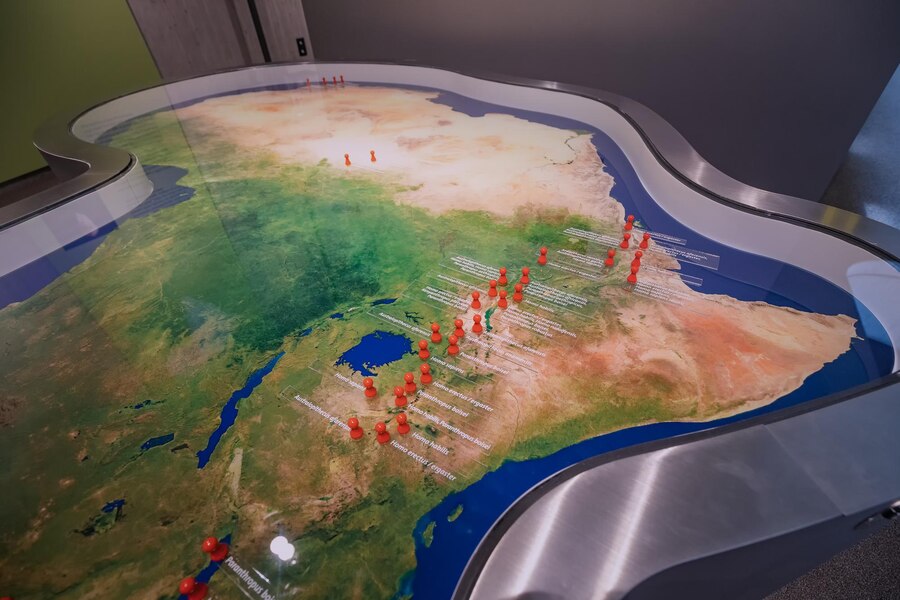On March 8, 2014, Malaysia Airlines Flight MH370 vanished during its route from Kuala Lumpur to Beijing. It was a disappearance that captured global attention and sent shockwaves through the aviation industry. Fast-forward nearly a decade, and MH370 remains one of history’s biggest aviation mysteries, sparking countless theories and investigations.
While physical searches for the missing aircraft have yielded limited results, a surprising tool has captured the imagination of investigators, aviation enthusiasts, and everyday citizens—Google Maps. The platform has become a hub for exploring theories, analyzing data, and satisfying the public’s curiosity about MH370.
This blog dives into the story of MH370, the role of Google Maps in shaping public interest, and the technological advances that continue to redefine aviation safety and our understanding of crises like these.
The Disappearance of MH370
On that fateful night in March 2014, Flight MH370 abruptly lost contact with air traffic controllers less than an hour after takeoff. Despite an international search effort spanning millions of square kilometers, the aircraft’s exact location remains unknown. Only a few pieces of debris confirmed to be from MH370 have been recovered along remote coastlines.
The incident raised critical questions about aviation safety, communication technology, and crisis management. Above all, it left the world grasping for answers.
Google Maps and MH370: A Unique Collaboration
Google Maps has transformed how we perceive and interact with the world. From locating hidden gems in your neighborhood to exploring vast oceans, the platform enables users to navigate virtually any corner of the Earth. It didn’t take long for tech-savvy explorers and amateur sleuths to use Google Maps to try and solve the MH370 mystery.
Satellite Data Meets Public Curiosity
Through Google Earth and Google Maps, users can access satellite imagery from all over the planet. After MH370’s disappearance, countless individuals scoured these images in the hope of finding debris or clues to the flight’s whereabouts.
Certain anomalies in the data, like objects spotted in the Indian Ocean or remote jungle regions, sparked widespread discussion online. Enthusiasts shared possible “discoveries,” contributing new leads and avenues for analysis. Although none have brought definitive answers, these efforts illustrate the profound engagement MH370 has inspired.
Why Google Maps Became a Go-To Platform
- Accessibility – Google Maps is free and easy to use, making it accessible to millions.
- Crowdsourcing Potential – The platform brings together people worldwide to collaborate on solving mysteries like MH370.
- Visualization Power – Satellite imagery offers a tangible way to engage with difficult topics, bridging the gap between firsthand search efforts and an interested global audience.
Public Engagement with MH370 on Google Maps
The role of Google Maps in the MH370 story is a fascinating example of how technology fuels public interest during crises. With limited updates from authorities, many people turned to online platforms to feel involved and to seek their own answers.

Social Media Buzz
Over the years, social media has amplified discussions around MH370. Platforms like YouTube and Reddit house forums dedicated to analyzing data, with many using Google Earth screenshots to present their findings.
For example, in 2018, a video claiming to identify parts of MH370 using Google Maps went viral on YouTube. Regardless of the accuracy of such claims, they reveal an enduring thirst for clarity and closure.
Armchair Investigators
People around the world—not just aviation experts—have spent hours combing through Google Earth to examine possibilities ranging from underwater wreckage to obscure islands. This phenomenon, while unconventional, reflects a democratization of problem-solving once reserved for specialists.
Technology’s Role in Modern Aviation and Crisis Management
The MH370 mystery has exposed both the strengths and limitations of aviation technology, opening a critical conversation about what needs to change.
Advancements in Aircraft Tracking
Prior to the MH370 incident, there was little urgency in improving real-time aircraft tracking. Today, new systems like Automatic Dependent Surveillance-Broadcast (ADS-B) allow constant monitoring, even over remote oceanic regions. These tools are meant to eliminate the possibility of another disappearance like MH370.
The Power of Data
The combination of satellite imagery, data analytics, and tools like Google Maps plays an essential role in tracking aircraft and managing crises. During the initial search for MH370, data from communication satellites like those operated by Inmarsat helped narrow down potential locations for the plane. This merging of technology and industry expertise highlights how vital data systems are in modern aviation.
Learnings for Crisis Management
The case of MH370 has also shown the importance of swift and transparent communication between airlines, governments, and investigators. Technology platforms, when used wisely, can bridge gaps in information and provide the public with regular updates.
Expert Insights on MH370’s Impact on Aviation
Few aviation incidents have left as lasting an impact as MH370. Experts in the field reflect on the lessons learned and their significance for the future.
- Rethinking Safety Protocols – “The disappearance of MH370 reshaped how we think about black-box technology and flight data transmission,” says an aviation analyst at the International Air Transport Association (IATA).
- Industry Collaboration – Experts agree the search for MH370 encouraged unprecedented global cooperation among airlines, governments, and private organizations. This collaborative spirit has led to advancements in aviation safety standards.
- Public-Driven Inquiry – According to aviation journalist Christine Negroni, the role of public involvement, such as amateur searches on Google Maps, demonstrates how technology can become a tool for collective curiosity and problem-solving.
Tips for Exploring Air Travel and Historical Events on Google Maps
If you’re fascinated by aviation and want to use Google Maps to explore the world of flight, here are some quick tips:
- Search for Historical Sites – Use Google Earth to view iconic aviation landmarks like abandoned airfields or notable airports.
- Track Current Flights – Pair Google Maps with apps like Flightradar24 to follow global flight activity in real time.
- Dive into Aviation Mysteries – Whether it’s MH370 or other unsolved incidents, Google Maps allows for a deeper, interactive look into aviation history.
- Connect with Online Communities – Platforms like Reddit host niche communities that share findings, coordinate searches, and discuss aviation-related topics.
Reflecting on the Legacy of MH370

The disappearance of MH370 is far more than a mystery—it’s a story of human resilience, technological ingenuity, and global collaboration. Platforms like Google Maps have given everyday people a way to engage with the search for answers, while experts continue to push for technological advancements that make air travel safer.
MH370’s impact stretches beyond aviation into how we perceive and use technology to address challenges. By combining curiosity, collaboration, and innovation, we can continue to solve complex problems and honor the lives lost in events like these.
Want to experience the intersection of technology and travel firsthand? Open Google Maps today to explore the world, engage with history, and become part of a larger global conversation.


